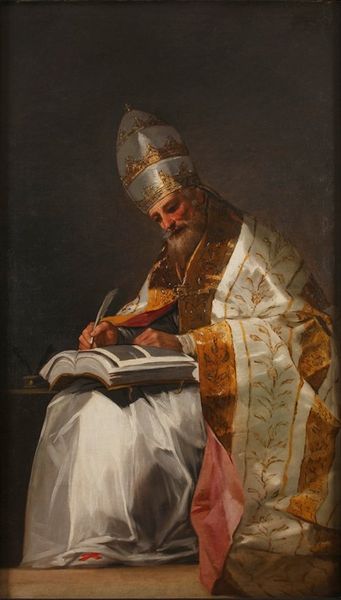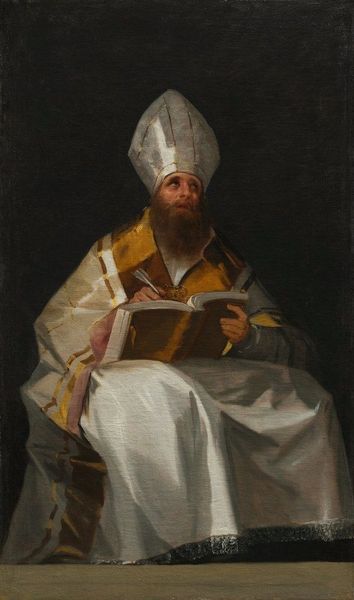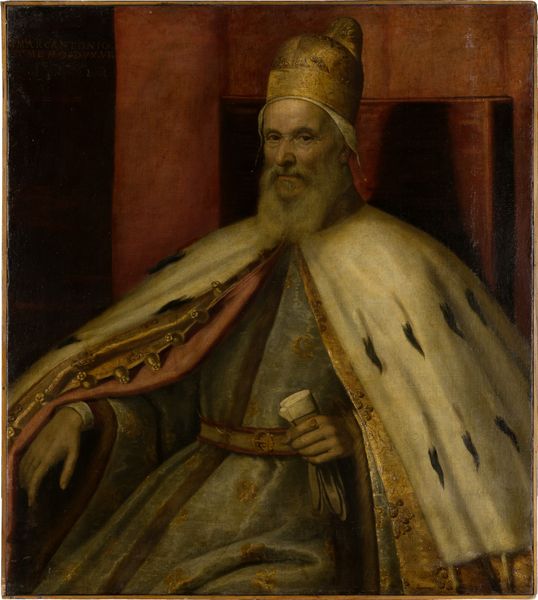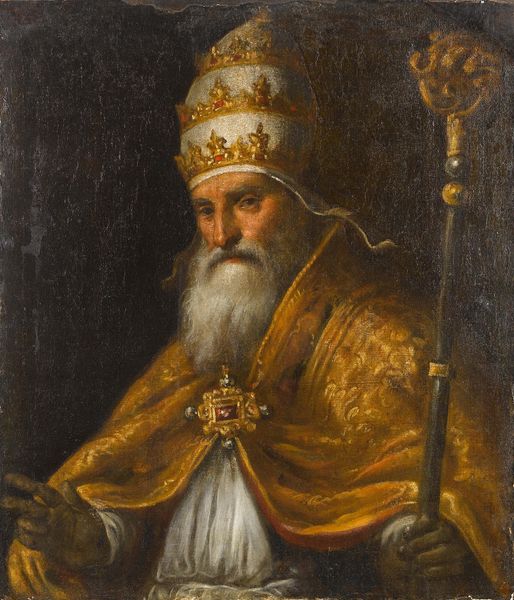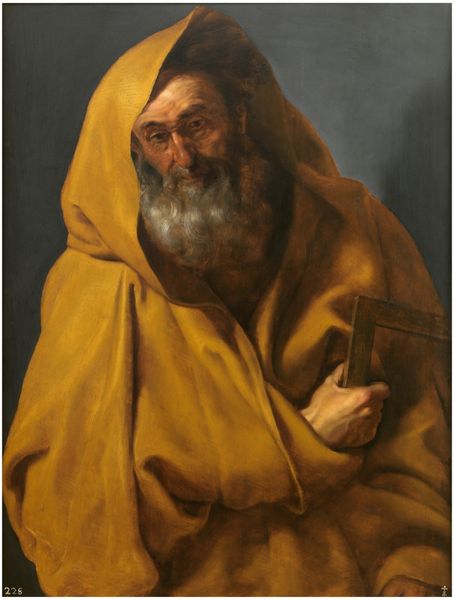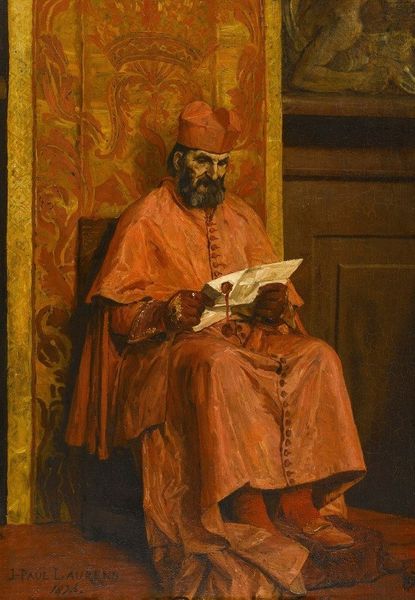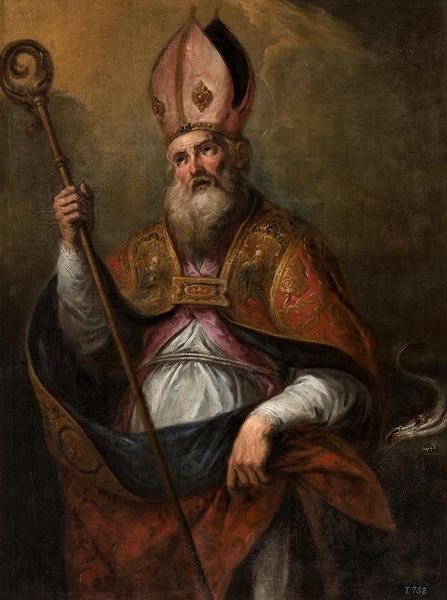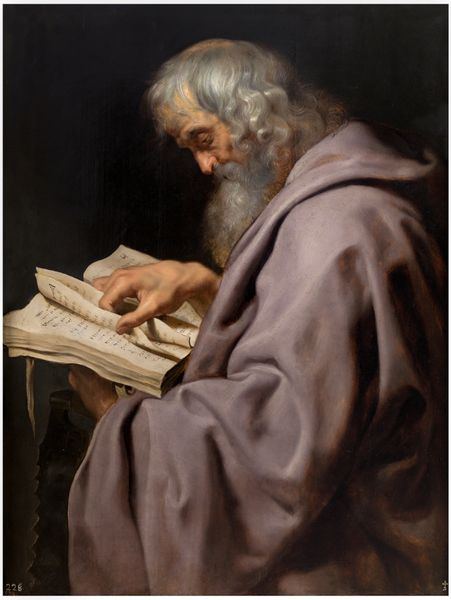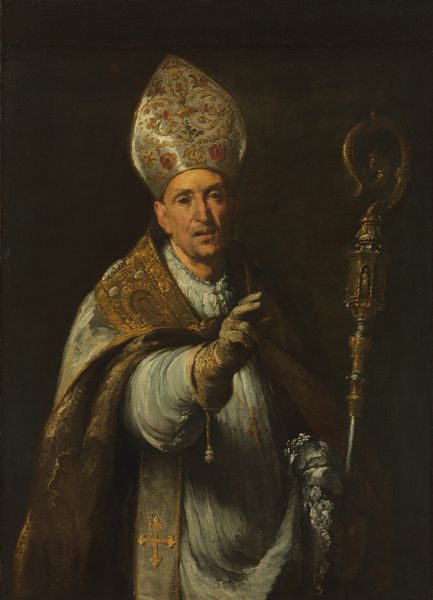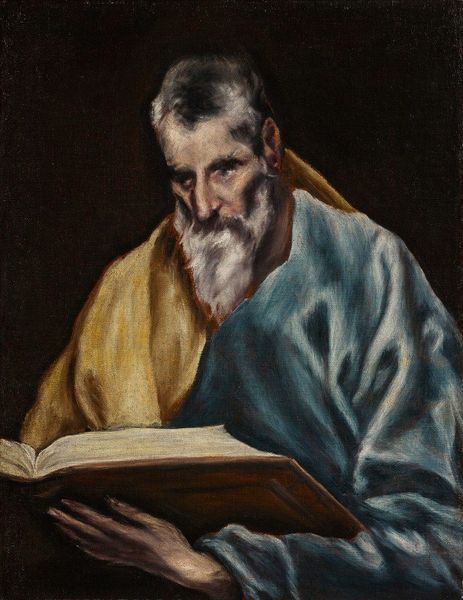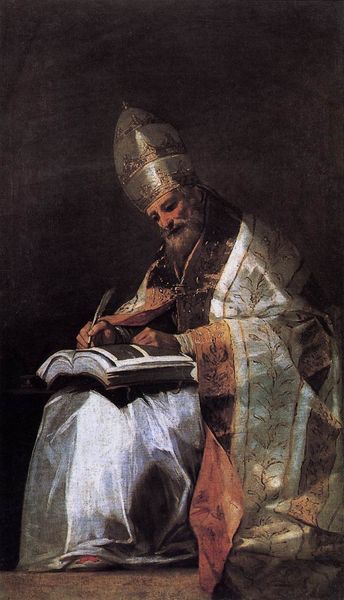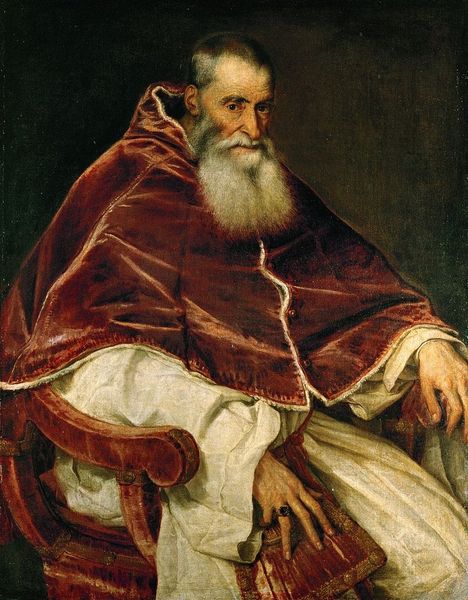
painting, oil-paint
#
portrait
#
baroque
#
painting
#
oil-paint
#
oil painting
#
history-painting
#
academic-art
Dimensions: 73 1/4 x 49 1/2 in. (186.06 x 125.73 cm) (sight)81 1/2 x 59 in. (207.01 x 149.86 cm) (outer frame)
Copyright: Public Domain
Curator: Standing before us is Claude Vignon's "Saint Ambrose," an oil painting crafted around 1623 to 1625. Editor: My first thought? A portrait of intense concentration. It's that steady gaze amidst a sea of textual clutter. Very relatable, actually. Curator: Indeed. Vignon captures Saint Ambrose, a significant figure in the 4th century, known for his profound influence on the early Church and his instrumental role in the conversion of Saint Augustine. Considering the materiality, the density of the pigment applied in layers to suggest light reflecting off of damask, vellum, even the skin, gives it such gravity. Editor: I am especially drawn to the contrast between the gold mitre—that pointed hat—and the shadowy background. It focuses you on his face. What did it take to grind down the pigment? You can imagine this holy man buried in tomes and treatises… his eyes have seen centuries. Curator: Right, the book—an essential object of the Baroque period signifying erudition, theological doctrine, and the power of the written word, speaks volumes to the period’s obsession with both knowledge and faith. I can almost smell the parchment and ink... Let's consider what pigments would have been used, where would Vignon have sourced the materials, what studio assistants may have assisted... Editor: Oh, absolutely. But for me, it's about what it feels like to lose yourself in the pursuit of knowledge, isn’t it? The gentle lighting evokes that sense of hushed reverence when engaging with these tangible forms. Curator: That focus, I agree, is also partly a consequence of a patron. Someone in possession of ample materials that might have paid Vignion for a devotional or a commemorative reason. Editor: So while Claude Vignon meticulously worked with paints and canvases and other materials of 17th century Europe, it invites all kind of associations: how this Bishop, with all this weight on him, might feel very human. Curator: Precisely, and examining Vignon’s choices regarding materiality and subject matter allows one to better interpret social conditions of his time. It speaks to the power dynamics between the Church and artists of the time, too, no? Editor: Yes, but it also connects across time to how each one of us seeks knowledge. We are all the Bishop.
Comments
minneapolisinstituteofart almost 2 years ago
⋮
Saint Ambrose, who lived in the 4th fourth century, was an important Christian scholar and bishop. Here he is depicted among his books in a forceful pose emphasized by his massive hands. On the table’s edge, a scourge, or whip—the knotted rope attached to a wooden rod—symbolizes Ambrose’s fight against heresy. The three knots refer to the doctrine of the Trinity, the concept of one god in three persons: Father, Son (Jesus), and Holy Spirit. Claude Vignon made this painting upon returning to Paris after spending over a decade in Italy. The saint’s sumptuous clothing and luminous gold miter (headdress) display a delight in color typical of Vignon’s work from this period.
Join the conversation
Join millions of artists and users on Artera today and experience the ultimate creative platform.
